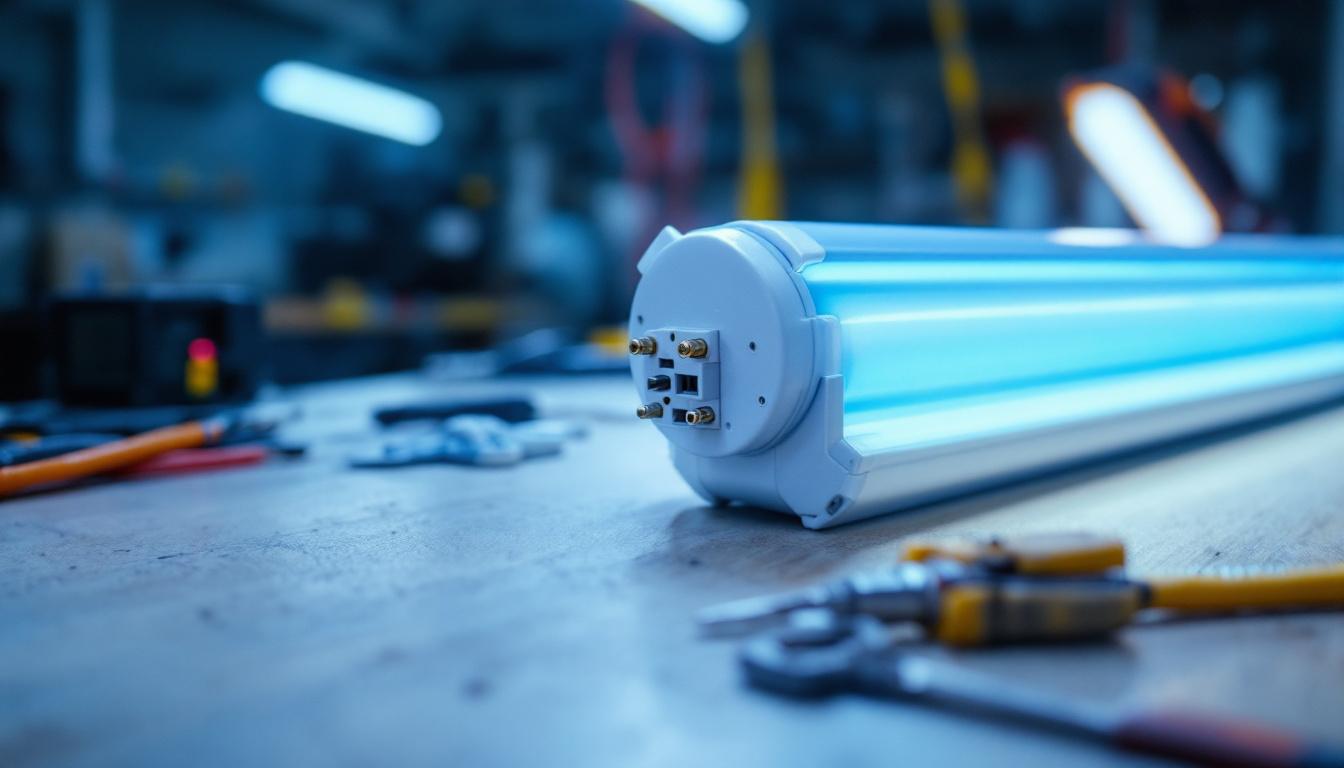
Lighting contractors play a crucial role in ensuring that spaces are illuminated effectively and aesthetically. As technology evolves, so do the tools and techniques used in the industry. However, the old-style light bulb remains a staple in many applications. This article will explore the essential tools that lighting contractors need to excel in their work, especially when dealing with traditional lighting solutions.
The old-style light bulb, often referred to as incandescent, has been a trusted source of light for decades. While newer technologies like LEDs and CFLs have gained popularity due to their energy efficiency, the warm glow and simplicity of incandescent bulbs continue to appeal to many homeowners and businesses. Their familiar shape and soft illumination create a cozy environment that many find comforting, making them a staple in homes where ambiance is key.
Lighting contractors must understand the characteristics of these bulbs, including wattage, lumens, and color temperature. This knowledge helps in selecting the right bulb for specific applications, ensuring that clients receive the best lighting solutions tailored to their needs. Additionally, understanding the lifespan of incandescent bulbs, which typically lasts around 1,000 hours, can assist contractors in advising clients on maintenance and replacement schedules, ensuring that lighting remains consistent and effective.
Despite the rise of energy-efficient alternatives, old-style light bulbs offer several benefits that make them a viable option for many projects. One significant advantage is their ability to render colors more accurately, providing a warm and inviting atmosphere. This quality makes incandescent bulbs particularly popular in settings where color accuracy is crucial, such as art studios and photography studios, where the true representation of colors can significantly impact the final outcome of the work.
Additionally, incandescent bulbs are compatible with a wide range of dimmer switches, allowing for versatile lighting control. This feature is particularly appealing for residential applications, where mood lighting is often desired. Homeowners can effortlessly adjust the brightness to create the perfect ambiance for any occasion, from intimate dinners to lively gatherings. The tactile experience of dimming a light bulb can also add a layer of satisfaction that digital controls often lack, appealing to those who appreciate a more traditional approach to lighting.
Old-style light bulbs are commonly used in various settings, from homes to commercial establishments. Their classic design makes them suitable for vintage-style fixtures, while their warm light enhances the ambiance of restaurants, cafes, and boutiques. Many establishments opt for these bulbs not just for their aesthetic but also for the nostalgic feel they evoke, drawing in customers who appreciate a sense of history and charm in their dining or shopping experience.
Moreover, these bulbs are often used in outdoor applications, such as porch lights and garden fixtures, where a welcoming glow is essential. The soft light emitted by incandescent bulbs can create a safe and inviting outdoor space, perfect for evening gatherings or quiet nights under the stars. Understanding these applications allows lighting contractors to recommend the best solutions for their clients, ensuring that both functionality and aesthetic appeal are achieved in every project. Furthermore, the ability to easily replace incandescent bulbs means that maintenance is straightforward, allowing for quick adjustments as needed without the complexities that sometimes accompany newer lighting technologies.
Equipped with the right tools, lighting contractors can efficiently and effectively install and maintain lighting systems. Here are some essential tools that every contractor should have in their arsenal.
A voltage tester is a fundamental tool for any lighting contractor. It allows for the safe and accurate measurement of electrical voltage in circuits, ensuring that they are functioning correctly before installation or maintenance. This tool helps prevent electrical shocks and ensures that the work environment is safe for both the contractor and the client.
When selecting a voltage tester, look for one that offers both audible and visual indicators. This feature provides an extra layer of safety, making it easier to identify live wires quickly.
Wire strippers are indispensable for preparing electrical wires for connections. These tools allow contractors to remove insulation from wires without damaging the conductor, ensuring a secure and reliable connection. A good pair of wire strippers will have multiple gauge settings, accommodating various wire sizes commonly used in lighting installations.
Investing in high-quality wire strippers can save time and reduce frustration during installations, making them a must-have for any lighting contractor.
Having a set of screwdrivers and nut drivers is essential for any lighting contractor. These tools are used for installing fixtures, securing junction boxes, and making adjustments to existing installations. A variety of sizes and types, including Phillips and flathead, is necessary to accommodate different screws and fasteners.
Consider investing in a magnetic screwdriver set, which can help hold screws in place while working in tight spaces, making installations more efficient.
In addition to basic tools, some projects may require more advanced equipment. These specialized tools can enhance efficiency and precision in lighting installations.
A laser level is an invaluable tool for ensuring that light fixtures are installed at the correct height and alignment. This tool projects a straight line across surfaces, allowing contractors to achieve perfect symmetry and level installations.
Using a laser level can significantly reduce the time spent on measurements and adjustments, leading to a more professional finish. It is particularly useful for installations in large spaces where precision is crucial.
A circuit analyzer is a sophisticated tool that helps contractors diagnose electrical issues in existing systems. This device can measure voltage, current, and resistance, providing valuable insights into the performance of lighting circuits.
By using a circuit analyzer, contractors can identify problems such as overloaded circuits or faulty wiring, allowing for timely repairs and ensuring the safety of the lighting system.
When working on high ceilings or outdoor installations, proper access equipment is essential. Ladders and scaffolding provide the necessary height to reach fixtures safely. It is crucial to select the right type of ladder for the job, considering factors such as weight capacity and stability.
Investing in quality ladders and scaffolding ensures safety and efficiency during installations, reducing the risk of accidents and injuries.
Safety should always be a top priority for lighting contractors. The right safety equipment can protect against electrical hazards and ensure a safe working environment.
Personal protective equipment, or PPE, is essential for any contractor working with electrical systems. This includes safety glasses, gloves, and hard hats. Safety glasses protect against flying debris, while gloves provide insulation against electrical shock.
Hard hats are particularly important when working in areas where overhead hazards may exist, such as construction sites. Ensuring that all team members are equipped with the necessary PPE promotes a culture of safety on the job site.
Accidents can happen, even with the best safety precautions in place. Having a well-stocked first aid kit on hand is essential for addressing minor injuries quickly. This kit should include items such as bandages, antiseptic wipes, and adhesive tape.
Regularly checking and replenishing the first aid kit ensures that it is always ready for use. Additionally, training team members on basic first aid procedures can be invaluable in emergency situations.
Electrical work carries inherent risks, including the potential for fires. Having a fire extinguisher readily available is crucial for any lighting contractor. It is essential to select the right type of extinguisher for electrical fires, typically a Class C extinguisher, which is designed for use on electrical equipment.
Regularly inspecting and maintaining the fire extinguisher ensures that it is in working order when needed. Training team members on how to use the extinguisher can also be beneficial in promoting safety on the job site.
The lighting industry is constantly evolving, with new technologies and trends emerging regularly. Lighting contractors must stay informed to remain competitive and provide the best services to their clients.
Participating in continuing education courses can help contractors stay updated on the latest advancements in lighting technology and installation techniques. Many organizations offer workshops, webinars, and certification programs that cover various aspects of the industry.
By investing in education, contractors can enhance their skills and knowledge, ultimately leading to improved service quality and client satisfaction.
Networking with other lighting professionals can provide valuable insights and opportunities for collaboration. Joining industry associations and attending trade shows can facilitate connections with peers and experts in the field.
These interactions can lead to the exchange of ideas, best practices, and even potential partnerships, fostering growth and innovation within the industry.
As technology advances, lighting contractors must adapt to new tools and techniques. Staying informed about the latest products, such as smart lighting systems and energy-efficient solutions, can help contractors offer cutting-edge services to their clients.
Regularly reading industry publications, blogs, and forums can provide insights into emerging technologies and trends, ensuring that contractors remain at the forefront of the lighting industry.
Lighting contractors play a vital role in creating well-lit and inviting spaces. By understanding the characteristics of old-style light bulbs and equipping themselves with the essential tools and safety equipment, contractors can deliver high-quality installations and services.
Staying updated with industry trends and advancements is crucial for success in this ever-evolving field. With the right tools and knowledge, lighting contractors can continue to illuminate spaces beautifully and efficiently, meeting the diverse needs of their clients.
Ready to enhance your lighting projects with the charm of old-style bulbs and the efficiency of modern tools? Look no further than LumenWholesale, where we specialize in providing lighting contractors with spec-grade lighting products at unbeatable wholesale prices. Our commitment to quality and affordability ensures that you get the most reliable and high-performance lighting solutions for every installation. Say goodbye to inflated markups and hello to free shipping on bulk orders, making your purchases straightforward and cost-effective. Elevate your lighting game with the perfect blend of quality, affordability, and convenience. Visit LumenWholesale today and discover wholesale lighting at the best value for all your contracting needs.

Discover how recessed lights are revolutionizing living room aesthetics and functionality.

Discover essential tips for selecting and installing fluorescent ballasts to prevent costly errors in your lighting projects.

Discover how bed LED lamps can revolutionize your lighting installation projects with enhanced efficiency, energy savings, and modern aesthetics.

Discover the essential checklist for lighting contractors working with LED tube lights.